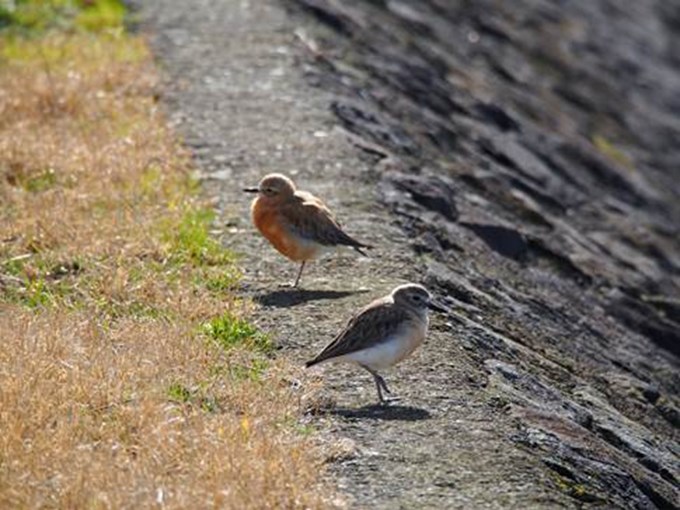If you’ve travelled along the Northern Motorway recently, you might have noticed there are some grassy areas that are looking a little unkempt.
It’s all for a good purpose however – The NZ Transport Agency is deliberately letting the grass grow long to help protect endangered dotterels in the area.
Several nesting dotterel pairs and chicks have made their homes in Albany and other sections of the Northern Motorway. The challenge is stopping them from moving in to areas that may become construction sites as part of the Northern Corridor Improvements project.
How does unmown grass help?
"The community's efforts to respect dotterel nesting areas on the North Shore over many years has led to an increase in numbers being recorded by ecologists, and we don't want these birds to be disturbed by construction activity," says Carol Bannock, the Transport Agency's Environmental Specialist.
"Ecologists tell us dotterels prefer mown, short grass and construction sites, and experience has shown that keeping the grass long will help deter them from choosing to nest in the construction areas."
"We appreciate the grass might look a bit unkempt as a result and hope people support us in doing all we can to protect these special birds."
Is there anything I can do?
Everyone’s got a role to play. We can help protect these sites by keeping off the long grass, sticking to the mown edge and walking paths, not littering, and keeping our dogs on the leash.
Ecologists will keep checking for any signs of dotterels and will work with the Transport Agency to help protect any dotterels determined to nest in the area.
Construction of the Northern Corridor Improvements project is due to start in stages from next year, pending approvals at a Board of Inquiry hearing.
About the NZ dotterel
- Northern NZ dotterel are found on or near the coast around much of the upper North Island.
- In urban areas like Auckland they often nest a little inland – on urban parks, mall car parks, golf courses, motorway verges, beside airport runways, building sites or quarries.
- Adults use distractions, such as pretending to have a broken wing, to try and lure predators away from their nests.
- Predation, disturbance and loss of habitat have led to a decline, but NZ dotterel numbers are on the rise in Auckland and Coromandel due to community efforts.


